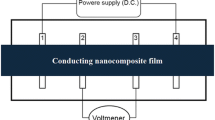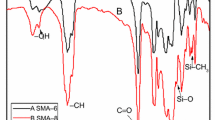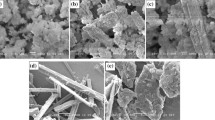Abstract
Reactive acrylate microgels with different reactive groups such as carboxyl, hydroxide groups had excellent properties such as quick-dry, low viscosity, high adhesion and hardness, which made them extensively used in preparing paints or in coating-modification. Reactive acrylate microgels were prepared by emulsion co-polymerization with zwitterions surfactant, anionic surfactant and nonionic surfactant as co-emulsifier. The water-base baking paints made from reactive acrylate microgels and melamine-formaldehyde resin had excellent combination properties. The aluminium powder can be well-dispersed in the paints. The influences of monomer components on the properties of the water-base baking paints were discussed in this paper. And the baking paints were also compared with the marketing solvent acrylate baking paints. It was found that the water-base acrylate amino baking paints had better combination properties than the organic solvent acrylate baking paints, which means that the water-base baking paints had a bright marketing future.
Similar content being viewed by others

References
Funke W. Possible uses of reactive microgels in paint formulation [J]. Oil Colour Chem Assoc, 1977, 60(11): 438–445.
Funke W, Okay O. Microgels: intramolecularly crosslinked macromolecules with a globular structure [J]. Advances in Polymer Science, 1998, 136: 136–229.
Tobita H, Kumagai M, Aoyagi N. Microgel formation in emulsion polymerization [J]. Polymer, 2000, 41(2): 481–487.
Raquois C, Rezaiguia S. Microgels in coating technology: structure and rheological properties [J]. Progress in Organic Coatings, 1995, 26(2–4): 239–250.
Murry M J, Snowden M J. The preparation, characterization and applications of colloidal microgels [J]. Advances in Colloid and Interface Science, 1995, 54: 73–91.
Blom H P, Gauthier M, Li K, et al. Soap-free emulsion polymerization of n-butyl acrylate: copolymerization with 1,1-(dimethyl)-1-(3-methacryloxyethyl)-1-(sulfo propyl) ammonium bteaine [J]. Journal of Applied Polymer Science, 2002, 70(1): 227–236.
Shi Yan, Wang Xiao-mei. Microemulsion and microemulsion polymerization [J]. Journal of the Graduates Sun Yat-Sen University (Natural Science Medicine), 2005, 26(3): 18–23 (in Chinese).
Connors E J, Cotter M L. Aqueous dispersion polymer: US, 6020422 [P]. 2000.
Zhang Jing, Tu Wei-ping. Research on polymerization stability of self-crosslinking acrylate reactive microgels latex [J]. China Synthetic Rubber Industry, 2006, 29(4): 257–262 (in Chinese).
Liu Guo-jie. The application of microgels in coatings [J]. China Coatings, 1996, 11(5): 35–38 (in Chinese).
Narumi A, Kaga H, Miura Y, et al. Synthesis of polystyrene microgel with glucose as hydrophilic segment via controlled free-radical polymerization [J]. Polymer, 2006, 47: 2269–2273.
Kadlubowski S, Grobelny J, Olejniczak W, et al. Pulses of fast electrons as a tool to synethesize poly (acrylic acid) nanogels [J]. Macromolecules, 2003, 36(7): 2484–2492.
Zhou N, Ni J, Yan X H, et al. Synthesis and solution properties of single-chain microgles form poly (N-isopropylacrylamide) copolymer [J]. Journal of Applied Polymer Science, 2003, 89(8): 2179–2183.
Wei Y Y, Lou Y W, Li B F, et al. Polyurethane acrylate microgel synthesized by emulsion polymerization using unsaturated self-emulsifier polymer [J]. Colloid and Polymer Science, 2006, 284(10): 1171–1178.
Author information
Authors and Affiliations
Corresponding author
Additional information
Project supported by the Science Foundation of Shanghai Municipal Education Commission (Grant No.03AK59)
About this article
Cite this article
Sa, Ss., Zhang, Bh., Yang, Q. et al. Application of reactive acrylate microgels in water-base coatings. J. Shanghai Univ.(Engl. Ed.) 13, 67–71 (2009). https://doi.org/10.1007/s11741-009-0113-2
Received:
Revised:
Published:
Issue Date:
DOI: https://doi.org/10.1007/s11741-009-0113-2



